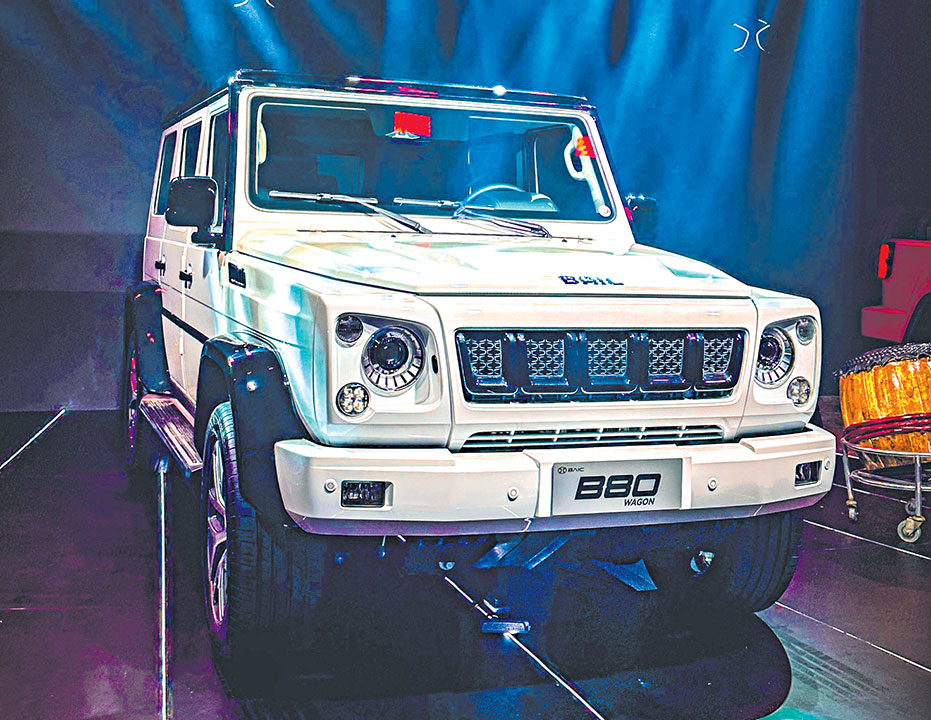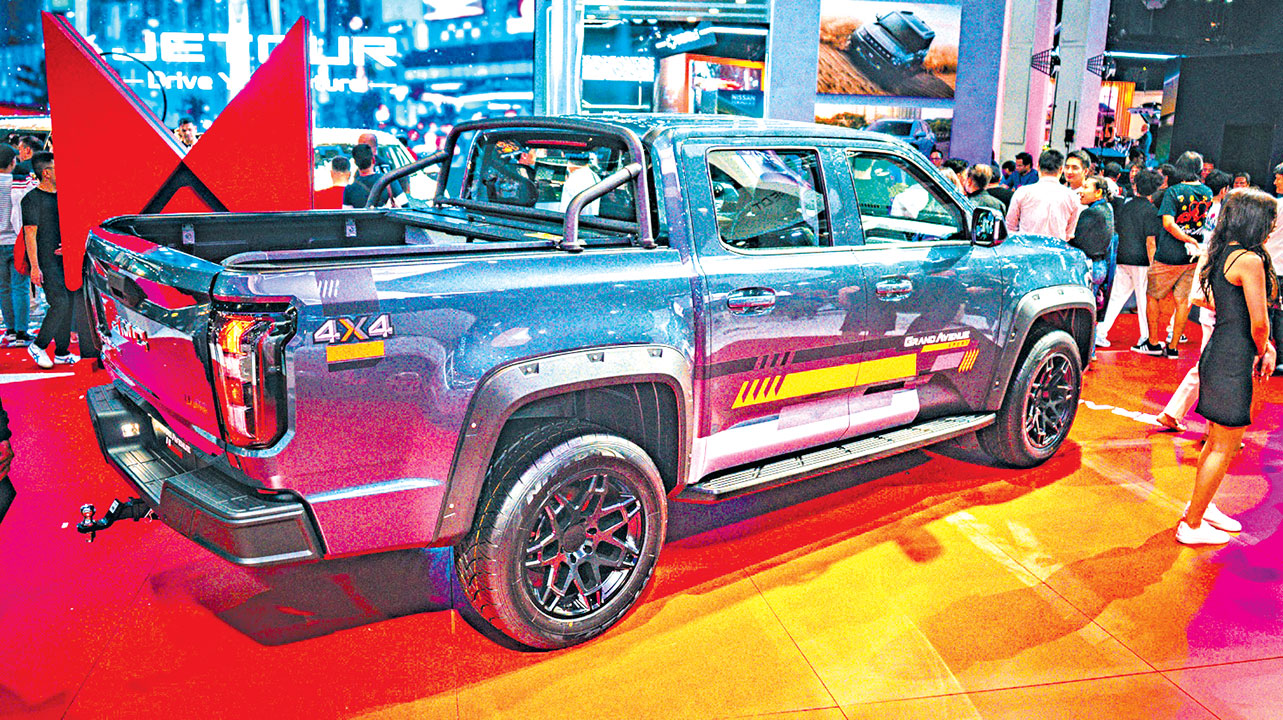
Talk Box
By Kap Maceda Aguila
The Manila International Auto Show (MIAS) has traditionally been a showcase not just for brands’ current lineups but, more importantly, a springboard for new models to publicly debut in the sheet metal.
While this year’s staging was no different, more importantly, perhaps for the first time, there were so many marques that debuted on the MIAS stage — unveiling their offerings and their brands’ value propositions in one fell swoop.
Out of the many nameplates revealed at the World Trade Center, we think these nine choices from car brands (arranged in alphabetical order) proved to be significant. Here’s why.

BAIC, now administered by the United Asia Automotive Group, Inc. (UAAGI), was re-acquainted to the buying public via a mighty five-model launch at the MIAS. If you remember BAIC for its past vehicles which were, to be honest, a little aesthetically challenged or an acquired taste, you definitely will be pleasantly surprised that such is not the case anymore.
Obviously, the centerpiece of its stint at the auto show was the BAIC B80 Wagon. Priced at a rather lofty P4.398 million, the model is clearly (too clearly, some may contend) inspired by the iconic Mercedes-Benz G-Wagen.
Armed with a robust 3.0-liter twin-turbo gas engine good for 280hp and 420Nm, the B80 Wagon gets a ZF transmission and electronic four-wheel-drive system, so it isn’t all about looks. “Fear is not part of the B80 Wagon’s vocabulary,” maintained BAIC Philippines in a release. For good measure, the off-roader benefits from a 39-degree approach angle, 25-degree ramp breakover angle, and 33-degree departure angle.
Inside, it flexes Teutonic levels of luxury with Nappa leather and a “powerful sound system with built-in subwoofer.” Interestingly, aside from the fact that BAIC in China helps assemble, yes, the Mercedes-Benz G-Wagen, BAIC also says that the model reflects a rich history of producing “military-grade vehicles” for the state.
Indeed, check out the build quality of the B80 Wagon. You will not be disappointed.

The sub-P1 million price point used to be a battleground among brands seeking the most action. While that psychic barrier may remain for a segment of the population, inflation and foreign exchange movements have veritably moved this threshold upward. Well, Changan Auto Philippines, under the aegis of Inchcape, seems to thinks otherwise.
At MIAS, the company unveiled a crossover that is, frankly speaking, so surprising in its pricing that I did a doubletake. The Changan CS15 subcompact SUV has a tag of, drum roll, P799,000. That’s just crazy low, yes. And Changan’s Jun Cajayon maintained in a statement that, “For a subcompact SUV packed with impressive features found in premium vehicles, the CS15 is difficult to resist at its price.”
And while I have yet to get behind the wheel, I tend to agree with this proposition after I pored over the spec sheet.
The CS15 boasts a 1.5-liter mill with a five-speed dual-clutch, with the output pegged at 105hp and 145Nm. Buyers will get keyless entry, leather seats, and an iOS- and Android-compatible infotainment system, along with a range of niceties such as multi-function steering remote controls, automatic headlights, a sunroof, tire-pressure monitoring system, and even hill hold control. Add a five-year/150,000-km warranty and, well, you get what I mean.

GAC is steadily earning its place (and reputation) in the market for proffering affordable alternatives to more established brands’ offerings. It’s cutting the competition’s legs from under them, owing to realistic pricing with unrealistically generous feature sets.
Another Astara-administered Chinese marque, GAC thoroughly embraces its “challenger brand” reputation. It continues to grow its breadth of choices by offering, for the first time, a hybrid vehicle.
The Emkoo Hybrid is a compact SUV that “keeps the Emkoo’s future-forward design, characterized by its head-turning front fascia and sharp body angles,” while ushering in a “state-of-the-art hybrid engine,” said to promise “both eco-friendly driving and impressive power on the road.”
The motivator is a 2.0-liter ATK engine, mated with a two-speed hybrid transmission. The engine submits 140hp and 180Nm, while the electric motor supplements with a further 134kW and 300Nm. All told, users are supposed to expect up to 22.1 kilometers per liter. Of course, GAC Motor Philippines stressed that the GAC Emkoo Hybrid will be exempt from the metro’s Unified Vehicular Volume Reduction Program (UVVRP).
I expect this hybrid to be just the first of many for GAC here.

The efforts of Hyundai Motor Philippines (HMPH) have truly gone a long way to revive the brand in the Philippines. Through a slew of new releases, aggressive marketing campaigns, plus sales and after-sales offerings, the South Korean marque has undergone a true Renaissance. According to the Chamber of Automotive Manufacturers of the Philippines, Inc. (CAMPI), which HMPH also sought and secured membership in, Hyundai moved 1,662 units in the first months of this year — up 40% versus the same period last year.
Aside from updating its portfolio, which included the introduction of electric vehicles, HMPH steps on throttle by bringing in two models — the Elantra N and the 2024 World Performance Car of the Year: Ioniq 5 N — in its vaunted N performance range. “Through (these), HMPH is able to strengthen competitiveness and offer a differentiated customer experience,” the company said in a release.
While the Ioniq 5 N, on account of the aforementioned global recognition, may seem like the obvious choice in terms of importance, I think the Elantra N might just be the more significant offering.
This officially marks the return of the sedan into the “rightsized” stable of HMPH, which had previously nixed the likes of the Reina and, yes, the Elantra. Well, the Elantra is back — albeit in N form. Selling for P2.738 million, this is powered by a turbocharged 2.0-liter engine mated with an eight-speed dual clutch transmission — taking it from standstill to 100kph in 5.3 seconds with the help of launch control.
We’ll see whether this Elantra release will open the floodgates for more (non-electric) Hyundai sedans.

Another Astara-managed brand enters the fray by unveiling three SUVs, two pickups, and an electric vehicle at the MIAS. Of these, I chose the JS8 Pro simply because I see it as a viable option for those in the market for a capable (and relatively affordable) quality SUV/MPV.
After all, this segment has traditionally been dominated by Japanese marques, and it will take a compelling alternative to lead people away from the usual. The JS8 Pro is something shiny and striking — boasting a “star waterfall armor” front grille, threading rear lights, illuminated scuff plates, split headlamps with “deep space radium lighting,” and 19-inch five-rim sport wheels.
Inside is a 360-degree skylight panoramic sunroof, a 12.3-inch floating screen, a full LCD instrument panel of the same size, multiple charging outlets and charging ports, and an array of storage options. Powering the vehicle is a turbocharged 1.5-liter engine. Drivers get to enjoy an electric power steering system. The JAC JS8 Pro is expected to be priced at P1.35 million, intimated a source to “Velocity.”
Meanwhile, JAC Motors Philippines Brand Head Tonette Lee maintained, “JAC prioritizes the customers’ changing needs, reflecting their commitment to a user-centric approach.” The JAC lineup of vehicles, she continued, is for buyers prioritizing value — a fit for the brand’s “focus on providing quality, essential features, and an enhanced driving experience.”
JAC vehicles will go on sale in August.

In March last year, Chinese crossover specialist Jetour formally entered the Philippines — making a splash in the market via interestingly designed SUVs, crossovers, and a cute electric vehicle (the Ice Cream). Owned by the giant Chery Holdings headquartered in Wuhu, China, Jetour now fortifies its local lineup with the addition of a capacious and capable off-roader, the T2.
The T2 calls to mind the Land Rover Defender — adopting its squared proportions, short overhangs, and gait. Jetour is also highlighting the abilities and tech complements of vehicle priced at P2.498 million for the Beyond (base model) and P2.598 million for the T2 Terrain, which gets “kits and fittings for more adventurous owners.”
Jetour Auto Philippines, Inc. brass refers to the T2 as “a beast,” powered by a turbocharged 2.0-liter Kunpeng TGDI engine mated with a Magna 7DCT third-generation wet dual-clutch transmission with intelligent execution system. It has on tap up to 251hp and 390Nm. Managing the four-wheel-drive system of the vehicle is a Smart XWD Intelligent 4WD.
Beyond the looks of the T2, its very real performance potential surely makes it worth more than a fraction of the Defender.

Astara Philippines continues to expand its first foothold in the ASEAN market by growing its number of brands. One of these is Jiangling Motors Corporation Limited (or JMC), a Nanchang, Jiangxi, China-headquartered maker of commercial vehicles first established in 1993.
While another distributor here owns the rights to distribute its medium-to-heavy commercial vehicles, Astara (for now) is selling pickups of JMC: the Grand Avenue and the Vigus.
The Grand Avenue is its flagship pickup model, which JMC Philippines says is the “largest offering in its segment, boasting an impressive array of features.” JMC Brand Head Arlan Reyes said that the Grand Avenue “sets a new benchmark in the pickup segment with its bold design, unmatched comfort, and powerful engine.” It is powered by a 2.3-liter turbodiesel mill developing 170ps and 450Nm.
Mr. Reyes does not shirk from mentioning that JMC has joint-venture arrangements with Ford and Isuzu, and that the Grand Avenue even highlights styling cues that “are similar with the Ford Everest and Ranger.” He underscored to “Velocity,” “I think people should take a look at the JMC pickup. They should feel it: The quality, ride comfort, amenities, and pricing. It’s really a take-home winner.”
The JMC Grand Avenue (with four trims) is priced from P1.221 million to P1.569 million.

Lynk & Co enters the Philippine market with a trio of elegantly styled models that should buttress its positioning as a new premium (or mid to premium, to be more precise). Tucked under the wing of UAAGI here, the Chinese/Swedish brand (by way of Geely and Volvo) Lynk & Co Philippines previewed two models (the 01 and the 06) to partners and the media ahead of the MIAS. Little did we know that the distributor had an ace up its sleeve.
That is the 05 SUV, an attractive fastback that looks like it’s meant to wage war with models further up the pricing totem pole. Powered by a turbocharged 2.0-liter engine, the 05 has 254ps and 350Nm on tap, transmitting the output to all four wheels. Priced at P2.748 million, this is not meant for the entry-level browsers but, asserted Lynk & Co, “those who value refined power and luxury.”
It will be interesting to see how the Lynk & Co tale will play out in the country. Judging from the attention it got at the MIAS, this challenger brand is off to a great start. Do traditional European marques have cause for worry?

Tan Chong International Limited Deputy Chairman and Managing Director Glenn Tan himself was in town to oversee the setting up of Subaru’s MIAS display, which saw the Philippine debut of the Subaru Outback 2.4 XT Touring EyeSight and Subaru Crosstrek GT Edition.
The latter model features GT kitting that imbues it with a more rugged, muscular profile, along with “top-notch core technologies” (such as a Boxer engine and symmetrical all-wheel drive). The aforementioned kitting is comprised of front, rear, and side under spoilers; and a roof spoiler. Inside, GT-embossed leather seats set off a two-tone cabin highlighted by contrast stitching, perforation, and exclusive branding. The Crosstrek GT Edition is fitted with model-specific 18-inch alloy wheels.
Overall, the GT surely embodies the desire of many Asian (and, certainly, Filipino) car buyers to have more distinct vehicles — not to mention ones that provide more in the way of looks and accoutrements.
This special model is priced at P2.088 million.